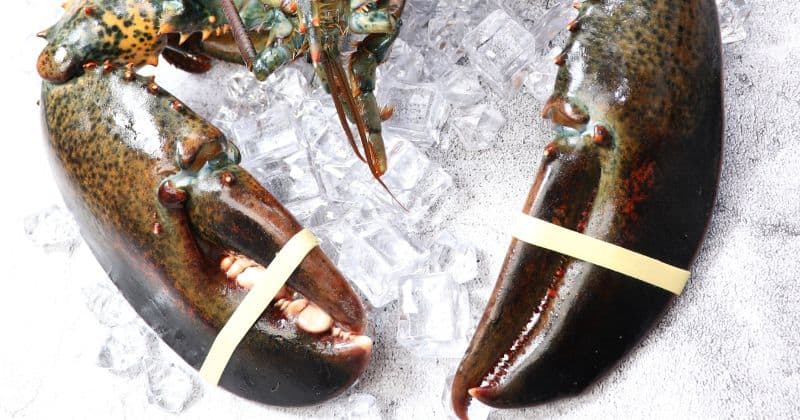Have you ever tried cooking lobster at home, only to find that the claws keep flailing around and causing a mess in the kitchen? If so, you’re not alone. Many home cooks struggle with handling live lobster while preparing it for the stove.
You may have heard of using rubber bands to keep the claws closed. But is this a safe and effective method?
In this article, we’ll take a closer look at the pros and cons of cooking lobster with rubber bands and some alternatives you might want to consider.
Why do we use rubber bands when cooking lobster?

Rubber bands are often used when cooking lobster to keep the claws closed. This can make it easier to handle the lobster and help prevent any kitchen accidents.
For example, if you’re planning to boil or steam your lobster, you might find that using rubber bands can make it easier to transfer the lobster from the pot to a serving platter or cutting board.
In addition to keeping the claws closed, rubber bands can also be used for other purposes when cooking lobster. For example, you might use rubber bands to secure the lobster’s tail to its body, which can help keep it from curling up or falling apart during the cooking process.
Overall, the main reason for using rubber bands when cooking lobster is to make handling and to cook the lobster easier and safer. Whether you’re boiling, steaming, grilling, or broiling your lobster, using rubber bands can help ensure that the claws stay closed and that the lobster stays intact.
Just be sure to choose a rubber band that is strong enough to hold the claws closed but not so strong that it causes harm to the lobster.
LobsterAnywhere - overnight Maine lobster delivery that guarantees freshness and flavor in every bite.
Is it safe to use rubber bands?
The short answer is yes; rubber bands are generally safe when cooking lobster. Mostly rubber bands from the grocery store are safe and food-grade. It should be fine if you are careful not to use a band too tight.
However, there is some debate about whether or not the rubber bands can cause harm to the lobster when heated in boiling water. If exposed to heat for too long, some worry that the rubber band may break down and release chemicals into the water; the research from The Lobster Institute at the University of Maine shows that meat safety and taste don’t make any difference, and the official website still shows that using rubber bands while cooking lobster is optional.
Keeping rubber bands on the claws is a good idea if you’re cooking live lobster. However, if you’re using frozen lobster, it’s best to remove any rubber bands before cooking and handle the lobster with care.
What are some alternatives to using rubber bands?
There are still other solutions to keeping the claws closed while cooking lobster. Here are a few alternatives to using rubber bands when cooking lobster:
- Use kitchen twine or butcher’s string – This allows you to keep the claws closed while keeping the lobster secure. Just tie it loosely so you can still move the claws and tail.
- Tape – There are a variety of food-grade tapes available that are specifically designed for use in the kitchen. This can be a quick and easy option, but choose a tape that is strong enough to hold the claws closed but not so strong that it causes harm to the lobster.
- Grill your lobster on a metal skewer – This is an excellent alternative if you’re grilling your lobster. Insert the skewer through both sides of the lobster, which will help keep its claws closed while cooking.
- Simply put the claws first in the pot – Another way to keep your lobster’s claws closed is by placing them in the pot first. This will help ensure that the claws stay closed while cooking and prevent any kitchen accidents.
If you use the last solution, boil the water first, then add your lobster to the pot. When adding a live lobster, handle it carefully and use tongs or gloves (if possible) to minimize contact with the claws and tail.
Personally, I like to use kitchen twine when cooking lobster. It is durable, it’s easy to tie and untie, and I don’t have to worry about using too much pressure with a rubber band or damaging the lobster with tape. You can even leave the claws open and use a skewer to hold the lobster.
No matter what method you choose, handle your lobster carefully and take all necessary steps to ensure it cooks safely. And don’t forget to remove any rubber bands before eating. That way, you can enjoy a delicious meal without any kitchen accidents or mishaps!






